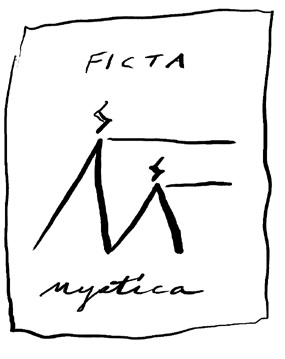What’s meant by “fictamystica”? What are some examples?
Fictamystica is mystical realism. This means presenting mystical situations in realistic terms. It can be outright supernatural or the ghostly breath of a possibility guessed at. A scent caught for an instant, a glimmer in dark woods.
It spans genres, being more style or touch of the eerie than a list of necessary, solid elements. Stories of any kind can touch upon, or be touched by, fictamystica’s atmospheric wisps, suggestions, and echoes.
Generally in fictamystica tales a miscellany of eerie insights arise as average people encounter unsuspected beings, enter unseen worlds, or touch aspects of reality they never thought possible. Whether actually or metaphorically, fictamystica offers a reader chances to see past the surface of things.
Here’s a partial list of works that can be considered fictamystica.
Off the top of my head …
From fantasy there are examples such as:
A Voyage to Arcturus by David Lindsay
The House on the Borderland by William Hope Hodgson
Etidorhpa by John Uri Lloyd
The Dream-Quest of Unknown Kadath by H P Lovecraft
Zothique by Clark Ashton Smith
Titus Groan, Gormenghast, & Titus Alone by Melvyn Peake
Nine Princes in Amber and sequels by Roger Zelazny
From science fiction we see fictamystica in:
More Than Human by Theodore Sturgeon
Childhood’s End by Arthur C Clarke
Frankenstein by Mary Wollstonecraft Shelley
I Have No Mouth And I Must Scream & Deathbird Stories by Harlan Ellison
From gothic fiction we find:
Narrative of A Gordon Pym by Edgar Allan Poe
At the Mountains of Madness by H P Lovecraft
The Beetle by Richard Marsh
The Monk by Matthew Lewis
The Mysteries of Udolpho by Ann Radcliffe
Darling by Mercedes M. Yardley
The Unburied by Charles Palliser
The Seance by John Harwood
The Occultist by Polly Schattel
From horror there are:
Creatures of the Pool by Ramsey Campbell
The Drowned Girl & The Red Tree by Caitlin Rebekah Kiernan
Imajica by Clive Barker
Dracula by Bram Stoker
Ghost Story by Peter Straub
Collected Stories of Algernon Blackwood
Horror Stories of Ambrose Bierce
Dark Eidolon & Others by Arthur Machen
Nameless by Mercedes M. Yardley
On An Odd Note by Gerald Kersh
Interview With The Vampire by Anne Rice
The Haunting of Hill House by Shirley Jackson
From mainstream and literary categories, these:
Jonathan Strange & Mr Norrell by Susanna Clarke
The Man on the Ceiling by Steve Rasnic & Melanie Tem
Inherent Vice by Thomas Pynchon
Babel by R F Kuang
Pattern Recognition by William Gibson
Beloved by Toni Morrison
Her Body And Other Parties by Carmen Maria Machado
Experimental Film by Gemma Files
Flicker by Theodore Roszak
Night Film by Marisha Pessl
No One Is Talking About This by Patricia Lockwood
A Slow Fire Burning by Paula Hawkins
The Turn of the Screw by Henry James
From mystery and suspense we can cull:
The Maltese Falcon by Dashiell Hammett
Shutter Island by Dennis Lehane
The IT Girl, The Lying Game, & In A Dark, Dark Wood by Ruth Ware
Hound of the Baskervilles by Arthur Conan Doyle
The Woman In White by Wilkie Collins
The Mystery of Edwin Drood by Charles Dickens
The Killing Doll by Ruth Rendell
From romance we can find:
Rebecca by Daphne DuMaurier
Wuthering Heights by Emily Brontë
Jane Eyre by Charlotte Brontë
Our Lady of Darkness by Fritz Leiber
And too many others to mention.
Fictamystica means seeing things from a particular vantage and slant, in a different light, so discussion will bubble up over what books fit and why. This is fine, a healthy discourse sustains growth.
Hope you enjoy exploring the site and discovering the fictamystica tone.
/ Gene Stewart

